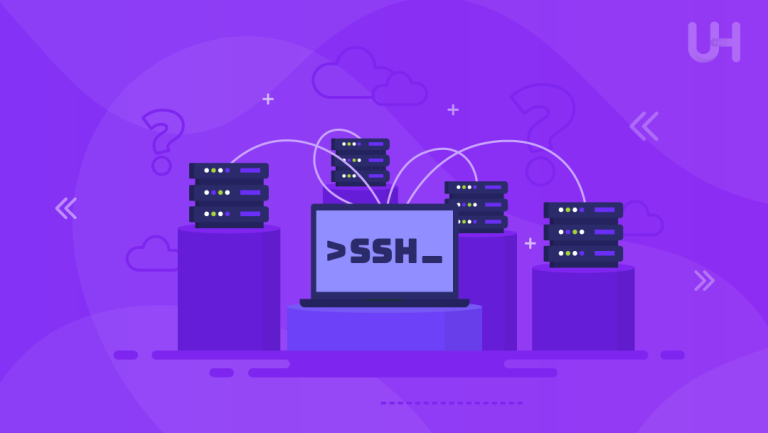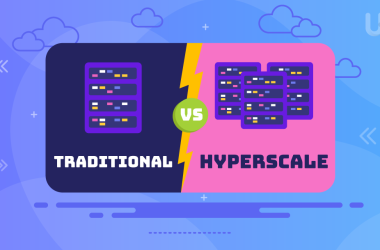Ensuring the security of your VPS server is paramount in today’s digital landscape. With the growing threat of brute force, it is vital to implement crucial strategies that fortify your VPS hosting and safeguard your valuable data. Let’s explore the essential measures you can take to prevent brute force attacks and secure your VPS.
Protecting your hosting server requires a comprehensive and proactive approach. You can significantly enhance your VPS security and protect your sensitive data. Learn how to prioritize server security and take decisive action to defend your systems against malicious threats.
Understanding Brute Force Attacks
Brute force is an aggressive and persistent attempt to gain unauthorized user access to a web server by systematically trying various combinations of usernames and passwords. These attacks exploit the vulnerability of weak or easily guessable login credentials.
The consequences of a successful brute-force attack can be devastating. An attacker who gains access to your VPS server can compromise sensitive data, manipulate operating systems, or launch further malicious activities. It poses a significant risk to the security and integrity of your virtual private server.
To protect your VPS from such attacks, it is crucial to comprehend the potential risks involved. A brute force attack can lead to unauthorized access to the root, granting attackers total control over your system. Once they obtain access, the attackers can execute root-level commands, manipulate configurations, and potentially disrupt your entire server.
Furthermore, brute force can pose a threat to the overall security of your VPS. These attacks can generate a substantial amount of malicious traffic, consuming valuable resources and impacting the performance of your server. It can result in degraded service quality, downtime, and financial losses.
Understanding the inner workings and potential consequences of brute force is the first step toward safeguarding your VPS hosting.
Read also how to secure your virtual server against DDoS Attacks:
Strengthening VPS Security: Disable Root Logins and Limit Root Access
To effectively prevent brute force attacks, it is crucial to disable root logins and limit root access. Unrestricted control over the operating system of your virtual server may seem convenient, but it also exposes potential security vulnerabilities.
Malicious actors often target the root user to gain complete control over your server. The best solution is to disable the root user login. Disabling it can significantly reduce the risk of unauthorized access to your VPS. Create a separate user account with restricted privileges and utilize that account for day-to-day operations.
This approach ensures that even if an attacker obtains the credentials for the user account, they would still lack the necessary root privileges to execute commands.
To implement this security measure, modify your server configuration file. Locate the specific configuration file for your operating system and disable root login by adjusting the corresponding settings. You add an extra layer of protection to your VPS hosting and decrease the likelihood of successful attacks.
Consider implementing secure remote server access alternatives, such as SSH Key Authentication (Secure Shell). SSH keys provide a more secure method of authentication and establishing a connection with your virtual server. By generating an SSH key pair, which consists of a private key stored on your local machine and a corresponding public key stored on the Linux VPS, you enhance the security of the login process.
To learn more about SSH service and how it works, read our article on the subject.
Implementing Password Policies
One of the crucial elements in securing VPS servers is the implementation of robust password authentication policies for all user accounts. Strong passwords serve as the primary defense against unauthorized access.
A strong password should possess complexity and uniqueness and should not be easily guessable. Educate users about avoiding common passwords such as sequential numbers or easily identifiable personal information. They can be easily cracked by brute-force login attempts. Enforcing password complexity is an effective strategy to enhance the security of user credentials.
To increase password complexity, it is advisable to implement rules that require a combination of uppercase and lowercase letters, numbers, and special characters. Regular password changes are also essential for maintaining strong security. Users should be encouraged to change their passwords every 60 to 90 days.
Educate users about the risks associated with using the same password across multiple accounts. Instruct them to use unique passwords for each service or platform they access, including their Linux VPS server. Maintain the security of your VPS, preventing a single compromised password from jeopardizing multiple accounts.
Regularly auditing user passwords is essential to identify weak or compromised passwords. Implement mechanisms that prevent users from reusing old passwords or selecting commonly used ones. Additionally, monitoring failed login attempts helps identify potential brute-force attacks, enabling you to take appropriate action to mitigate them.
By implementing strong password policies, auditing passwords, and monitoring failed login attempts, you significantly enhance the security of your VPS, reducing the risk of unauthorized access and increasing brute force protection.
VPS Secure: Firewall Protection
Firewalls play a vital role in ensuring the security of your VPS, serving as a crucial barrier between your server and the outside world. They provide essential protection against unauthorized access and potential threats. Configuring and maintaining a firewall is of utmost importance to maintain the integrity of virtual private servers.
Firewalls can be implemented at both the network level and the server level. At the network level, a hardware firewall adds an extra layer of defense by filtering incoming and outgoing traffic based on predefined rules. At the server level, security software is installed directly on the VPS, acting as the first line of defense.
When selecting a firewall, consider advanced features such as intrusion detection and prevention, application-level filtering, and deep packet inspection. These features enhance the effectiveness of the firewall in identifying and blocking potential threats.

Whitelisting involves creating a list of trusted IP addresses with access to your VPS. It restricts access only to known and approved entities, significantly reducing the risk of unauthorized access. On the other hand, greylisting involves blocking specific IP addresses or ranges associated with malicious activity.
Regularly updating and patching your firewall is crucial to stay protected against emerging security vulnerabilities. Firewall vendors frequently release updates and security patches to address newly discovered vulnerabilities or enhance firewall performance. Keeping your firewall up to date ensures that you have the latest security measures in place.
Monitoring and analyzing firewall logs are essential practices for identifying potential security incidents or suspicious activities. By regularly reviewing firewall logs, you can detect unauthorized access attempts, unusual network traffic patterns, or other signs of malicious activity. These logs provide valuable insights and enable you to take immediate action when necessary.
Two-Factor Authentication
Two-factor authentication (2FA) provides an additional layer of verification, going beyond traditional username and password combinations, to significantly increase the difficulty for unauthorized individuals to access your VPS.
The concept of two-factor authentication revolves around the use of two factors: something you know (the first factor) and something you have (the second factor). Typically, the first factor is a password, while the second factor can be a unique code generated by a mobile app, a physical security key, or a biometric factor like a fingerprint or facial recognition.
There are various methods available for implementing two-factor authentication on your VPS. One popular approach is to use time-based one-time password (TOTP) apps. These apps generate a unique code that changes every 30 seconds, requiring you to enter it along with your password during the login process. Examples of TOTP apps include Google Authenticator and Authy.
Another method involves the use of hardware security keys. These physical devices are plugged into a USB port or connected wirelessly to your device, providing an additional layer of authentication. When logging in, you need to insert the security key and follow the prompts to authenticate your access.

To enable two-factor authentication on your Linux server, you will typically need to install and configure the necessary software or tools. It may involve installing a specific plugin or module tailored to your operating system or web hosting control panel.
By enabling two-factor authentication, you significantly enhance web hosting security by mitigating the risk of unauthorized access. Even if an attacker obtains your password, they would still need the second factor, such as a unique code from a mobile app or a physical security key, to gain access to your VPS.
Conclusion
In this comprehensive guide, we have thoroughly examined the methods to prevent brute force attacks on your VPS and reinforce its security. They present a significant threat to the integrity and availability of your virtual private server, underscoring the importance of proactively implementing measures to defend against such malicious activities.
It is vital to remember that VPS security is an ongoing process, not a one-time endeavor. Regularly reassess your security measures, stay informed about the latest security practices, and adapt your strategies accordingly. By prioritizing VPS security and taking proactive steps to protect your systems, you can ensure the safety of your online presence and enjoy peace of mind.
We sincerely hope that this guide has provided you with valuable insights and practical steps to prevent brute-force attacks on your VPS. By implementing the key strategies outlined here, you can fortify your VPS security, mitigate risks, and maintain a secure and reliable virtual environment for your applications and data.
Remain vigilant, avoid installing unnecessary software, prioritize security, and shield your VPS from any threats.
You don’t want to choose managed VPS Security Hosting, because you need something more powerful? We have prepared a Fully Managed Dedicated Server for you! We offer more than basic security measures. Our robust Linux security features and secure FTP acces guarantee you full protection from threats. Our expert team handles server management, ensuring optimal performance and security for your dedicated server. Let us demonstrate the difference!












